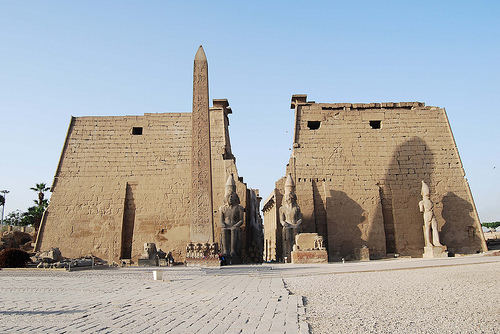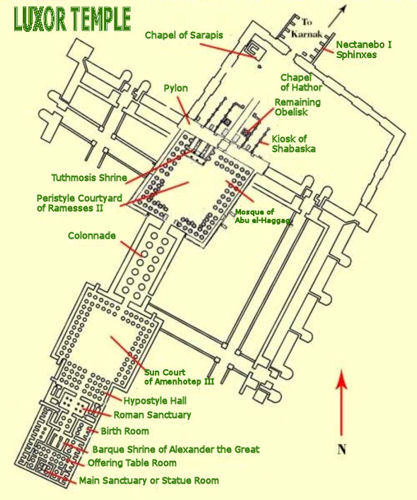

Location: Luxor Governorate Map

Luxor, often hailed as the "world's greatest open-air museum," is a historic city in Upper Egypt, serving as the capital of Luxor Governorate. With a population of approximately 263,109 as of 2020 and an area of about 417 square kilometers (161 square miles), it stands on the east bank of the Nile River, incorporating the ancient city of Thebes, one of the oldest continuously inhabited settlements on Earth. Luxor was the political, religious, and military capital of ancient Egypt during the New Kingdom (circa 1550–1070 BCE), renowned for its monumental temples, tombs, and necropolises that attract millions of tourists annually. The city is divided into the East Bank, home to vibrant modern life and grand temples like Karnak and Luxor Temple, and the West Bank, featuring the Theban Necropolis including the Valley of the Kings and Valley of the Queens. As of 2025, Luxor remains a cornerstone of Egypt's tourism industry, contributing significantly to the national economy while preserving its ancient heritage amid ongoing archaeological discoveries and restoration projects. It is also associated with the Muslim saint Yusuf Abu al-Haggag, whose mosque is integrated into Luxor Temple, blending pharaonic and Islamic history.
Luxor is strategically positioned along the Nile River at coordinates 25°41′48″N 32°38′40″E, with an elevation of about 89 meters (292 feet) above sea level. The city's geography is shaped by the Nile, which divides it into the East Bank (the "City of the Living," with temples and urban areas) and the West Bank (the "City of the Dead," with mortuary temples and tombs). Approximately 4,000 years ago, a significant shift in the Nile's course expanded the floodplain, enhancing arable land and supporting ancient agriculture. The surrounding landscape includes fertile river valleys contrasting with the arid Eastern and Western Deserts, part of the larger Sahara. Luxor's urban expanse covers lush palm groves, sugarcane fields, and ancient ruins integrated into modern infrastructure. The Nile not only provides water for irrigation but also facilitates transportation and tourism activities like felucca sails and cruises. This riverine setting has historically made Luxor a hub for trade and culture, though it is vulnerable to seasonal flooding and erosion that threaten archaeological sites.
Luxor boasts a hot desert climate (Köppen BWh), making it one of the driest and sunniest places on Earth, with an average annual precipitation of less than 1 millimeter (0.04 inches) and rainfall occurring irregularly, sometimes not at all in a given year. Summers are intensely hot, with average highs exceeding 40°C (104°F) from June to August, peaking at a record 50°C (122°F) on May 15, 1991. Winters are mild and pleasant, with daytime highs around 22–28°C (72–82°F) and lows dipping to about 5°C (41°F), though a record low of -1°C (30°F) was recorded on February 6, 1989. The city enjoys nearly 4,000 hours of sunshine annually, with a significant diurnal temperature range of about 16°C (29°F). Relative humidity averages 39.9%, ranging from 27% in summer to 57% in winter. As of 2025, the best time to visit is late October to early April to avoid extreme heat and crowds, aligning with cooler weather ideal for exploring outdoor sites. Climate change has led to more erratic patterns, including occasional dust storms and increased heatwaves, impacting tourism and preservation efforts.
Luxor's history spans over 4,000 years, rooted in ancient Thebes (known as wAs.t or "city of the sceptre" in Egyptian texts), which emerged as a key settlement during the 11th Dynasty under Montuhotep II, who unified Egypt after the First Intermediate Period. By the New Kingdom, Thebes became the capital, a center for Amun-Ra worship, and a powerhouse accumulating wealth from expeditions to Kush, Canaan, Phoenicia, and Syria. It played a pivotal role in expelling the Hyksos invaders and hosted diplomatic events, including marriages like that of a Hittite prince to Tutankhamun's widow, Ankhesenamun. The city's golden age featured massive construction under pharaohs like Amenhotep III and Ramesses II. Its influence declined in the Late Period, with northern capitals rising, though it remained a religious hub until the Greco-Roman era, when Alexander the Great visited during the Opet Festival. Assyrian attacks by Ashurbanipal in the 7th century BCE devastated parts of it. In the Christian era, Roman monks established monasteries at sites like Deir el-Bahri. Following the Muslim conquest in the 7th century CE, Luxor Temple incorporated the Abu Haggag Mosque. European rediscovery intensified in the 18th century, leading to 19th- and 20th-century excavations. Modern incidents include the 1997 Luxor massacre (killing 64, including 59 tourists) and a 2013 hot air balloon crash (19 deaths), both affecting tourism. In 2021, the "Lost Golden City" (Aten), dating to Amenhotep III's reign, was unearthed near Luxor, hailed as one of the most significant finds since Tutankhamun's tomb. As of 2025, ongoing restorations and UNESCO protections continue to uncover layers of its pharaonic past.
Luxor's allure lies in its unparalleled concentration of ancient
monuments, blending pharaonic grandeur with cultural layers. Key sites
include:
Karnak Temple Complex: The largest religious building
ever constructed, spanning 200 acres on the East Bank, dedicated to
Amun-Ra. It features the Hypostyle Hall with 134 massive columns,
obelisks, and pylons built over 2,000 years by multiple pharaohs. It's
connected to Luxor Temple via the Avenue of Sphinxes.
Luxor Temple:
Centrally located on the East Bank, begun by Amenhotep III and expanded
by Ramesses II, with colossal statues and reliefs depicting the Opet
Festival. The integrated Abu Haggag Mosque adds an Islamic dimension.
Valley of the Kings: On the West Bank, this royal necropolis houses over
60 tombs, including Tutankhamun's (KV62), discovered in 1922 by Howard
Carter. It safeguards intricate wall paintings and artifacts from tomb
robbers.
Valley of the Queens: Nearby, burial site for royal wives
and children, featuring the stunning tomb of Nefertari (QV66), wife of
Ramesses II, with vivid frescoes.
Mortuary Temples: Including
Hatshepsut's at Deir el-Bahri, a terraced masterpiece, and the Ramesseum
of Ramesses II, with fallen colossi inspiring Shelley's "Ozymandias."
Colossi of Memnon: Two massive statues of Amenhotep III guarding his
lost mortuary temple.
Other highlights encompass Medinet Habu
(Ramesses III's temple), Deir el-Medina (artisans' village), and the
Luxor Museum, housing artifacts like Tutankhamun's treasures. Cultural
heritage extends to festivals like the Opet revival and local crafts
such as alabaster carving and pottery. In 2025, guided tours emphasize
sustainable visits to mitigate overcrowding.
Luxor's economy is predominantly tourism-driven, generating revenue from site visits, Nile cruises, and activities like hot air balloon rides (introduced in 1988). Agriculture, including sugarcane, tomatoes, and pigeon farming, supplements income, alongside industries like pottery and handicrafts. Tourism employs many locals but has fluctuated due to events like the 1997 massacre, 2011 Arab Spring, and the 2013 balloon crash. Recovery post-COVID has been strong, with 2025 projections emphasizing eco-friendly initiatives. The sector contributes to Egypt's GDP, though challenges include overtourism straining sites and economic disparities. Community programs promote local guides and artisans, fostering sustainable growth.
Contemporary Luxor blends antiquity with modernity, featuring bustling souks, hotels ranging from luxury resorts like the Winter Palace to budget options, and infrastructure like Luxor International Airport facilitating global access. The city hosts cultural events, including the Luxor African Film Festival, and educational institutions preserving heritage. Recent developments include the 2021 unearthing of the "Lost Golden City," revealing insights into Amenhotep III's era, and ongoing restorations of the Avenue of Sphinxes, reopened in 2021 after decades of work. As of 2025, projects focus on digital mapping of sites for virtual tours, enhancing accessibility while reducing physical wear. Security has improved, though visitors are advised to follow advisories. Luxor's significance endures as a bridge between ancient wonders and modern Egypt, symbolizing cultural resilience and inspiring global fascination.